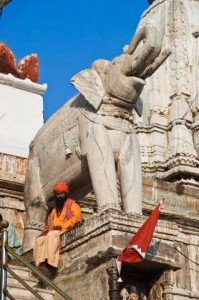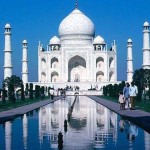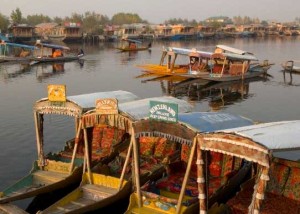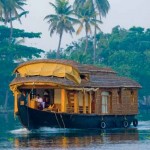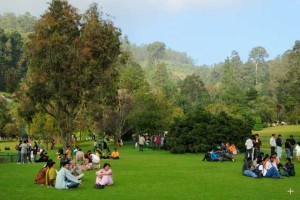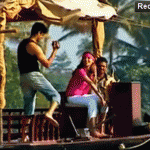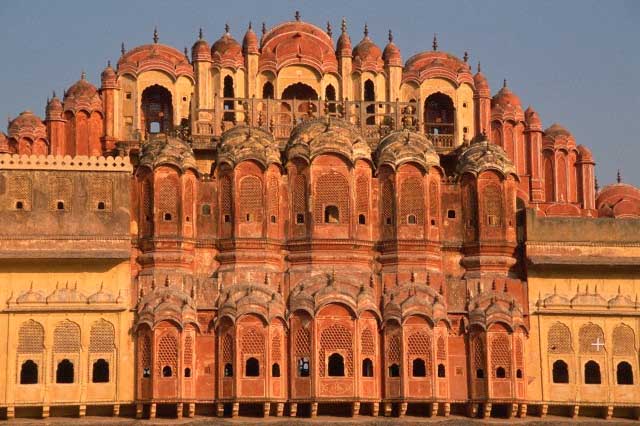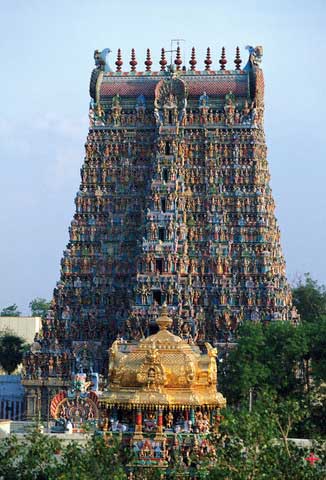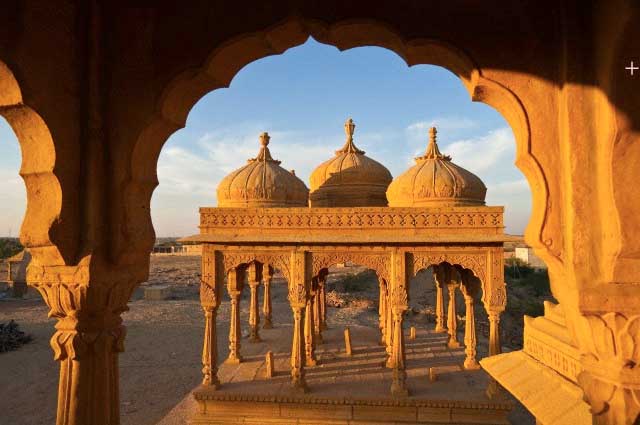India Holiday Packages » New Delhi Tour Package
New Delhi Tour Package
New Delhi Tour Package Get Free Travel Plan from Experts before you plan your trip to New Delhi. we will provide details on things to do hotels vacation rental and all details for you to have a trip to New Delhi Get Discount Tour Itinerary to New Delhi. Delhi is officially designated the capital of India, but the names are often used interchangeably.
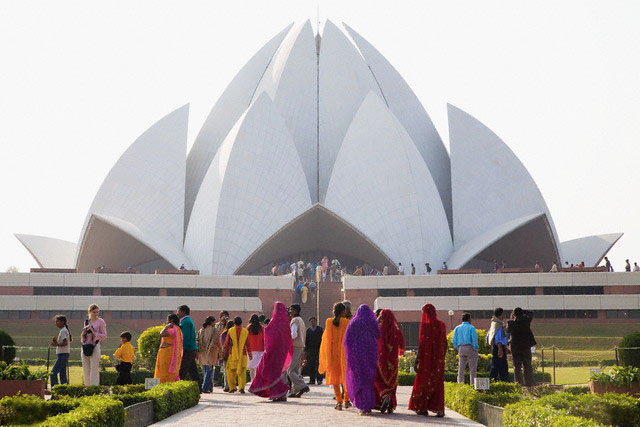
Delhi Sightseeing Trip
- Red Fort The Red Fort (Lal Qila) is one of Delhi’s top tourist sights. A brilliant red sandstone fort built by the Mughal Emperor Shah Jahan (who also built Agra‘s Taj Mahal) as his ruling palace. Completed in 1648, the years since have not treated the buildings kindly: the rooms have long since been stripped of all objects, the marble inlays are long gone and quite a few buildings are off limits. Still, the scale remains imposing and the gardens are kept lush and green even in midwinter.
- Chatta Chowk, (Covered Bazaar). True to the name, this is a covered bazaar between the gate and the fort itself, now filled with souvenir hawkers.
- Diwan-i-Am, (Hall of Public Audience). This building separates the outer court from the inner court, and has a marble platform for the emperor’s throne.
- Hayat Baksh Bagh, (Life-Bestowing Gardens). Once a grand garden of full of fountains and streams, now sadly all dry — only dry channels and acres of green grass remain.
- Diwan-i-Khas, (Hall of Private Audience). Built completely of marble, this is where the emperor received special visitors.
- Khas Mahal, (Private Palace), The Emperor’s main residence. The octagonal Mussaman Burj tower looks out toward the Yamuna River, and is where the Emperor used to appear before the public for each morning.
- Rang Mahal, (Colour Palace). The residence of the Sultan’s main wife.
- Mumtaz Mahal, (Jewel Palace). Contained six apartments for the Sultan’s harem. Now used as a museum of court textiles, carpets, weapons, etc (free).
- Daawat Khana, A minor palace at the northmost end of the Fort, this was originally the residence of a prince, but it was converted into a tea house by the British, a function it continues today. Basic meals go for around 60 rupees, drinks 10-20 rupees, and it also has the cleanest toilets around.
- Swatantra Sangrama Sangrahalaya, (Museum of the Independence Movement). To the left after the Chatta Chowk, this is a reasonably well-presented museum on the history of independence activism in India, starting from the Mutiny of 1857 all the way to Gandhi.
- Humayun’s Tomb in south Delhi, near Hazrat Nizamuddin station, is one of Delhi’s three UNESCO World Heritage Sites.
- Qutub Minar, The most famous structure on grounds, this 72.5 m minaret was the tallest “skyscraper” in the world when built (1193-1368) – it was constructed on the orders of Qutb-ud-din Aybak. Delicately carved, it has been astonishingly well-preserved and is still an awe-inspiring sight today. It’s often visible from air when flying into IGI airport! (Sticklers for archaeological truth will, however, note that the top of the tower has twice been rebuilt after an earthquake, and the base has been restored more recently.) While entry into the tower itself is no longer permitted, for Rs 10 per 5 min you can view the scenery via a little webcam on top.
- Quwwat-ul-Islam Mosque, Delhi’s first and grandest mosque, now mostly in ruins, but many parts of the complex are still standing and the sandstone decorations are still impressive. Check out the extraordinarily ornate carvings near the tomb of Iltutmish on the west side of the complex.
- Iron Pillar, iIn the centre of the mosque. True to its name, this is a 7 m iron pillar erected in 400 AD by Chandragupta II Vikramaditya, also known as “he, by the breezes of whose prowess the southern ocean is even still perfumed” according to the inscription carved on the base. Alas, Chandragupta II’s perfume has long since faded, but to the amazement of metallurgists everywhere, his pillar is still going strong, after 1,600 years.
- Ala-i-Minar, Ala-ud-din-Khilji set out to build a tower twice as high as the Qutub Minar, but died after a mere 24.5 m was complete. The first story stands to this day.
- Ala-i-Darwaza, This square, domed building once acted as the entrance to the mosque, but is now tucked away behind the minar. Inlaid marble decorations and latticed stone screens.
- Tomb of Imam Zamin, Outside the main complex, next to the Ala-i-Darzawa, this octagonal tomb commemorates a Turkestani iman who was based in the mosque during the reign of Sikandar Lodi.
- Kiran Nadar Museum of Art, 145 DLF South Court Mall, Saket, Established at the initiative of avid art collector Kiran Nadar, KNMA opened in January 2010, as the first private museum of Art, exhibiting Modern and Contemporary works from India and the subcontinent. The core corpus of KNMA highlights the most extraordinary works from F.N. Souza, M.F. Hussain, S.H. Raza, V.S. Gaitonde, Tyeb Mehta, Akbar Padamsee, Ram Kumar, A. Ramachandran, Rameshwar Broota and several others. Located in the popular tourist destination of Saket, the museum is open Tues-Sun’, 10:30AM-6:30PM. Entry is free. The nearest Metro Station is Malviya Nagar.
- Gandhi Smriti, 10AM-5PM (closed Monday). This estate is the site of Mahatma Gandhi’s martyrdom. Includes a museum celebrating his life and the room he lived in during his final days.
- India Habitat Centre, Lodhi Rd This center though not a museum in the strictest sense of the word, is most noted for its ever-changing art exhibits, plays and films, as well as an international selection of food items in its food court.Only members can avail of the dining facilities at its following two restaurants-Dilli-O-Dilli & the Oriental octopus wheras he eatopia and the American Diner are accessible to all.
- International Doll’s Museum, Nehru House, 4 Bahadur Shah Zafar Marg. ? +91 11 2331 6970 (thru 6974), . T-S 10AM-6PM. A museum of dolls from all over the country. You get to see the costumes and art from all over India, as well as some nice crafts. Rs 10.
- National Museum, Janpath, The layout here is a labyrinthine and the presentation won’t win any awards, but the collection is unparalleled and contains some true masterpieces. The section on the Indus Valley Culture and the one on Buddhist Heritage is most informative. The museum also showcases the arts and handicrafts from different regions of India. Keep an eye out for the 4,600 year old Harappan temple dancer, the Gandhara-era standing Buddha with Greek hair and a Roman toga, the stunning miniature painting gallery, and the giant temple chariot parked outside. An informative place for all interested in knowing more about Indian culture and history. Entry Rs 300 for foreigners (includes useful audioguide), Rs 10 Indians (optional audioguide Rs 150 extra), 1 rupees for Indian Students, plus Rs 300 if you want to use a camera. Decent restaurant on the second floor (lunch buffet Rs 200). A cloak room is free for customers. Open Tu-Su 10AM-5PM.
- National Science Centre, Gate No. 1, Pragati Maidan. Although the name is too grand, the museum is definitely a must see for science enthusiasts, especially those who are young. A good place to refresh your basics, particularly in Physics. Has a recently built section on DNA Science and also a section on Dinosaurs. A section on ancient Indian Science and Technology, including Vedic Mathematics & Ayurveda. The “Energy Ball” display near the entrance is interesting and perhaps the most captivating of all. A section on Electronic Technologies sponsored by Samsung is also a must see.
- National Railway Museum, Chanakyapuri, houses a collection of Indian trains from the past to the present – a worthwhile look into India’s proud railway heritage. The collection includes carriages belonging to Indian potentates and British viceroys. Children can ride the small train that circumnavigates the museum. There is a small cafe on the premises. Open 9:30AM-7:30PM (Apr-Sept) and 9:30AM-5:30PM (Oct-Mar). Closed Mondays and national holidays.
- Nehru Memorial Museum (Teen Murti Bhavan), (Closed Monday). Former residence of India’s first prime minister, Jawaharlal Nehru, now a museum of his life. Was used by the Commander-in-chief of the Indian Army before Indian Independence. Includes a Planetarium.Its entry fee is Rs.50 For adults an 25 for childrens.Here they show a small movie on Astro and Universe. Free.
- Rajpath, This is a main parade route that leads from Rashtrapati Bhavan (the President’s residence) to India Gate, with many grassy lawns along the way. Especially nice in the evenings and at night when the buildings are lit and the vendors come out to supply the many picnicking families.
- India Gate, This monument has been built as a memorial for the Indian soldiers who died in World War I. There is also a fire (“eternal flame”) burning for all fallen Indian soldiers.
- Jantar Mantar. 9AM-7PM. One of five astronomical observatories commissioned by Sawai Jain Singh II of Jaipur during the 18th century. The odd structures inside are actually enormous scientific instruments for measuring the movement of celestial bodies
- Raj Ghat. 9:30AM-5:30PM. Memorial to Mahatma Gandhi at the site of his cremation. Check for closure dates/security checks around national holidays/gandhiji’s death anniversary
- Purana Qila (Old Fort), (next to the Delhi Zoo), Ruins of the 16th century city of Shergarh, this complex sits on top of what is believed to be the site of Indraprastha, the capital of the Pandavas in the Mahabharata epic.
- Tughlaqabad Fort, Massive fortress built by Ghiyasuddin Tughlaq in the 14th century and was the third city of Delhi. The monstrous ruins of this complex are now overrun by hordes of Langur monkeys.
- Azaad Hind Gram, (Tikri Kalam on NH-10), 10AM-6PM. A tourist complex dedicated to Netaji (respected leader) Subhash Chandra Bose, a leader in the Indian independence movement
- Bahá’í Lotus Temple Kalkaji, South Delhi, Shaped like a lotus bud with 27 petals, this stunning temple suspended above milky-blue ponds is surely one of the most magnificent monuments ever made from concrete, however there is very little to see inside. The lush park around is well landscaped but mostly off-limits. Free entry. Open Tue-Sun, 1st April to 30th September 9AM-7:PM, 1 Oct-31 Mar 9:30AM-5:30PM.
- Chhattarpur Mandir Huge & beautiful temple complex with a big surrounding campus – located near Mehrauli area of South Delhi.
- Gurudwara Bangla Sahib just off Baba Kharak Singh Marg near Connaught Place, is the main gurudwara for the many Sikhs of Delhi. You will need to cover your head (scarves provided for free) and stash your shoes in the shoe storage run by volunteers (also free) [37].
- Gurudwara Sis Ganj Chandni Chowk (Old Delhi). An important Sikh place of worship. Built on the spot where their ninth guru, Guru Tegh Bahadur, was beheaded on the orders of the mughal emperor Aurangzeb, it is an oasis of calm in the chaos of Old Delhi’s Chandni Chowk. You will need to cover your head (scarves provided for free) and stash your shoes in the shoe storage run by volunteers (also free).
- Sacred Heart Cathedral 1 Ashok Place, off Baba Kharak singh Marg and Bhai Veer Singh Marg near Connaught Place near to Gurdwara Bangla Sahib. It is the biggest church in terms of structure and also the headquarters of the Delhi Catholic Archdiocese. A must visit to enjoy the beutiful architecture and pristine beuty.
- Cathdral Church of Redemption Address: Church Lane, Near Rashtrapati Bhawan. It is the headquarters of the Church of North India, Delhi Diocese. Built by Henry Medd between 1927-1935 it is a fine example of Colonial architecture.
- St. Peter’s Cathedral Bhai Veer Singh Marg, near St Columbas’ school the headquarters of the Jacobite Syrian Orthodox church in Delhi. It is known as the Antioch of the East and is a fine example of Oriental architecture blended with modernity.
Things To Do & Attractions In New Delhi
- Arts village in Hauz Khas
- Chandni Chowk
- Connaught Place and around
- Delhi By Cycle
- Dilli Haat
- Heritage Walk in Old Delhi
- Humayun’s Tomb
- India Gate And Children’s Park
- Jama Masjid
- Jantar Mantar
- Khan Market
- Khari Baoli
- Lotus Temple
- Mughal Gardens
- National Zoological Park
- Nizamuddin Auliya Dargah
- Old Fort
- Qutab Minar
- Raj Ghat
- Red Fort
- Santushti Shopping Complex
- Sarojini Nagar Market
- St. James Church
- Swaminarayan Akshardham Temple
[travelmap-map first=100 last=100]
Tourist Spot in New Delhi
[feedlist listurl="http://www.holidaypackagetour.com/category/delhi/feed/" limit=20 desc=150 more=no]
Book Hotels & Vacation Rental in New Delhi
[feedlist listurl="http://www.airticketsandhotels.in/hotels/booking/delhi/feed/" limit=20 desc=150 more=no]
- Bahá’í Lotus Temple [33], Kalkaji, South Delhi, [34]. Shaped like a lotus bud with 27 petals, this stunning temple suspended above milky-blue ponds is surely one of the most magnificent monuments ever made from concrete, however there is very little to see inside. The lush park around is well landscaped but mostly off-limits. Free entry. Open Tue-Sun, 1st April to 30th September 9AM-7:PM, 1 Oct-31 Mar 9:30AM-5:30PM.
- Chhattarpur Mandir [35]. Huge & beautiful temple complex with a big surrounding campus – located near Mehrauli area of South Delhi.
- Gurudwara Bangla Sahib [36], just off Baba Kharak Singh Marg near Connaught Place, is the main gurudwara for the many Sikhs of Delhi. You will need to cover your head (scarves provided for free) and stash your shoes in the shoe storage run by volunteers (also free) [37].
- Gurudwara Sis Ganj [38], Chandni Chowk (Old Delhi). An important Sikh place of worship. Built on the spot where their ninth guru, Guru Tegh Bahadur, was beheaded on the orders of the mughal emperor Aurangzeb, it is an oasis of calm in the chaos of Old Delhi’s Chandni Chowk. You will need to cover your head (scarves provided for free) and stash your shoes in the shoe storage run by volunteers (also free).
- Sacred Heart Cathedral [39], 1 Ashok Place, off Baba Kharak singh Marg and Bhai Veer Singh Marg near Connaught Place near to Gurdwara Bangla Sahib. It is the biggest church in terms of structure and also the headquarters of the Delhi Catholic Archdiocese. A must visit to enjoy the beutiful architecture and pristine beuty.
- Cathdral Church of Redemption [40] Address: Church Lane, Near Rashtrapati Bhawan. It is the headquarters of the Church of North India, Delhi Diocese. Built by Henry Medd between 1927-1935 it is a fine example of Colonial architecture.
- St. Peter’s Cathedral Bhai Veer Singh Marg, near St Columbas’ school the headquarters of the Jacobite Syrian Orthodox church in Delhi. It is known as the Antioch of the East and is a fine example of Oriental architecture blended with modernity.
Golden Triangle Packages
Golden Triangle Tour India With Kerala
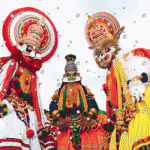
Golden Triangle Tour Package India with Incredible Kerala Destination : Delhi -Agra -Jaipur -Trivendrum -Alleppey -Kumarakom -Cochin … Tour Package »
Agra Delhi Jaipur Tour Packages India
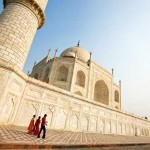
Tourist Destination/Places : Delhi -Jaipur – Agra – Varanasi – Delhi Duration : 08 Nights / 09 … Tour Package »
Wildlife Tour Packages India
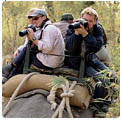
Wildlife Tour Packages India Duration : 10 Days / 9 Nights, Destinations covered : Delhi, Sariska, Jaipur, … Tour Package »
India Heritage Tour Packages
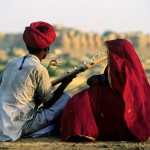
India Heritage Tour Packages takes you to the historical and heritage sightseeing attractions of India. Package Duration … Tour Package »
Goa Jaipur Agra Delhi Holiday Packages

Destinations : Delhi – Agra- Jaipur -Goa Duration : 07 Nights/ 08 Days, Enjoy Tajmahal With Agra … Tour Package »
Golden Triangle Tour Package India By Train
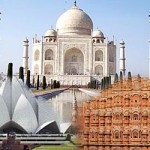
Destination: Delhi-Agra-Jaipur-Delhi Duration : 03 Nights/ 04 Days Day 01 : Arrival New Delhi Arrive Delhi, meet assist at … Tour Package »
Golden Triangle Tours India
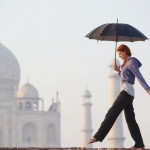
Duration : 04 Days / 03 Nights Places : Delhi – Agra – Jaipur Day 01 / Arrival Delhi … Tour Package »
India Tour Packages From Singapore

India Tour Packages From Singapore, India Tour Vacation From Singapore, India Holiday Packages From Singapore, India Honeymoon … Tour Package »
Golden Triangle Tour With Rajasthan Camel Safari

Golden Triangle Tour With Camel Safari India Destinations: delhi – mandawa – jaipur – agra – delhi … Tour Package »
Rajasthan Tour Packages India
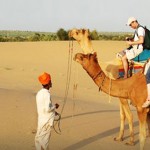
Rajasthan Tour Packages India offers trip to Rajasthan from any part of the world Duration Offers : … Tour Package »
Tajmahal Tour Package With Ayurveda in India
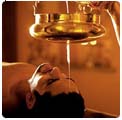
Tajmahal Ayurveda Tour Packages Covers Delhi Agra Jaipur Mumbai and Ayurveda Tour at Trivandrum Kerala Duration : … Tour Package »
India Tour packages from London
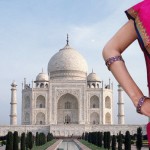
India Tour packages from London Duration 10 Days and 9 Nights Destinations Covered New Delhi – Agra … Tour Package »
Buddhist India Nepal Pilgrimage Tour Packages
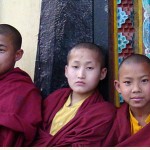
Buddhist India Nepal Tour Packages Destinations : Delhi – Jaipur – Agra – On Train – Varanasi … Tour Package »
Golden Triangle Tour Packages India
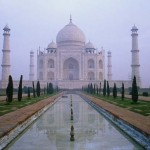
Golden Triangle Tour package (Delhi – Agra – Jaipur) covers Delhi the capital city of India This … Tour Package »
Latest Booked Packages
Tourist Places in Rajasthan India
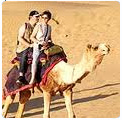
Explore Jodhpur Mehran Garh Fort This majestic fort sprawled across a 125 hill, is one of the most impressive … Travel Information »
Rajasthan Luxury Holiday Packages India
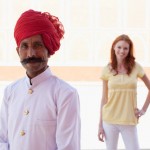
Rajasthan Luxury Holiday Packages India Covers Destinations : Delhi – Agra – Jaipur – Pushkar – Udaipur … Travel Information »
Jammu Kashmir Tour Packages India

Jammu Kashmir Tour Packages Duration 5 Days and 4 Nights Places to Visit : Srinagar – Gulmarg … Travel Information »
Wildlife Tour Packages India

Wildlife Tour Packages India Duration : 10 Days / 9 Nights, Destinations covered : Delhi, Sariska, Jaipur, … Travel Information »
Kerala Wildlife Holidays Tour Packages India

Kerala Wildlife Tour Package of India Covers Destinations Cochin, Munnar Hill station Thekkady wildlife sanctuary, Alleppey backwater … Travel Information »
Ladakh Adventure Trekking Tour Packages India
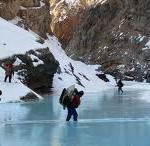
Ladakh Adventure Trekking Tour Destination Covered: – Leh – Ulleytokpo – Lamayuru – Wanla – Hinju … Travel Information »
India Heritage Tour Packages

India Heritage Tour Packages takes you to the historical and heritage sightseeing attractions of India. Package Duration … Travel Information »
Yoga Holidays Tour Packages North India

Yoga Holiday Tour Packages India at North India Destinations : Delhi – Haridwar – Rishikesk – … Travel Information »
India Tour Packages From Singapore

India Tour Packages From Singapore, India Tour Vacation From Singapore, India Holiday Packages From Singapore, India Honeymoon … Travel Information »
Eco tourism
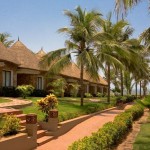
Eco tourism is very much the hot buzz word in the travel world. For years, most … Travel Information »
Golden Temple Himachal Tour Packages India
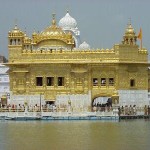
Golden Temple Himachal Tour Packages India Covers Travel Destinations : Delhi – Shimla – Manali – Dharamshala … Travel Information »
Golden Triangle Tour With Rajasthan Camel Safari

Golden Triangle Tour With Camel Safari India Destinations: delhi – mandawa – jaipur – agra – delhi … Travel Information »
Luxury Houseboat Cruise Holidays Kerala India
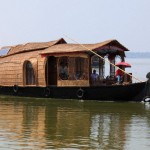
Kerala House Boat Tour Package Destination : Cochin ,Munnar, Alleppey ,Kovalam Duration : 05 Nights / 06 Days … Travel Information »
India Tour packages from London

India Tour packages from London Duration 10 Days and 9 Nights Destinations Covered New Delhi – Agra … Travel Information »
Luxury Train Tours Deccan Odyssey India Package
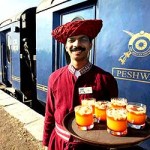
Luxury Train Tours By Deccan Odyssey India PackageTourist Places Covered : Mumbai – Jaigadh, Ganapatipule, Ratangiri – … Travel Information »
Buddhist India Nepal Pilgrimage Tour Packages

Buddhist India Nepal Tour Packages Destinations : Delhi – Jaipur – Agra – On Train – Varanasi … Travel Information »
Travel To India
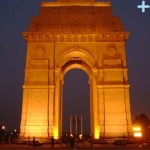
The fascinating splendor of India India is a vast country, comprising of many religions, languages, culture and tradition … Travel Information »
Ayurveda and Spa Holidays in Kerala India

Ayurveda and Spa Holidays in Kerala India Sightseeing Tour With Ayurveda and Spa at Kerala by Experts. … Travel Information »

